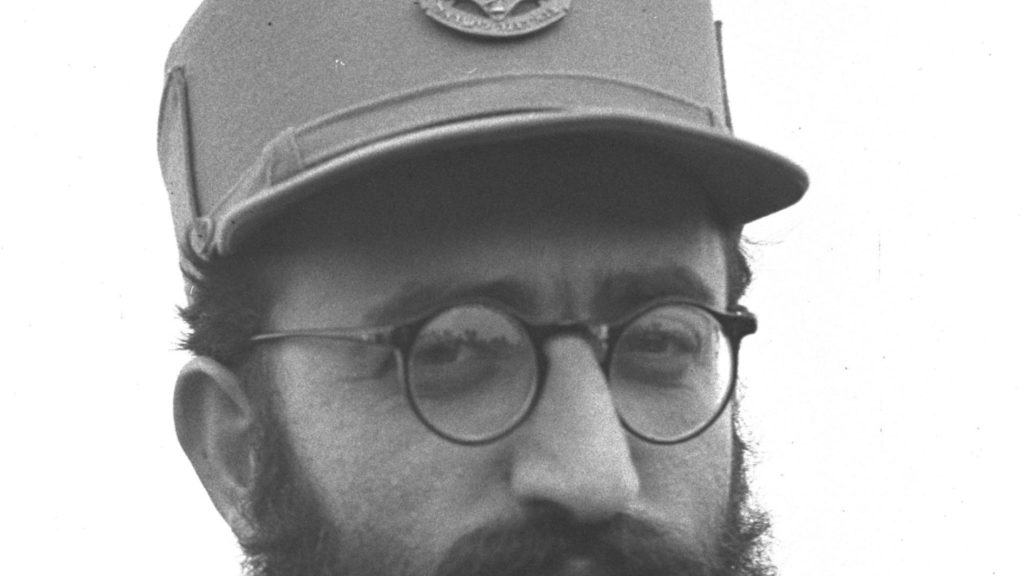Judaism Meets the Machine: Dr. Moshe Koppel on AI and the Future of Jewish Life
BY MARC DWECK
Of all the essays I encountered during the 2024–2025 Solomon Fellowship, Dr. Moshe Koppel’s “What Artificial Intelligence Has in Store for Judaism” left the strongest impression on me. As someone interested in both technology and Jewish thought, I was struck by Koppel’s ability to bridge these worlds with clarity and insight. Writing from his unique vantage point as both a computer scientist at Bar Ilan University and a learned Torah scholar, Koppel offers a compelling exploration of how AI might transform traditional Jewish life.
Koppel begins his essay with an overarching explanation of AI’s foundations, from early computing to today’s neural networks. He gives his readers clear analogies, like comparing “overfitting” to conspiracy theories, making complex ideas graspable even for non-specialists. Koppel also addresses the exponential pace at which AI is advancing, quoting predictions that AI may perform cognitive tasks as well as humans within 20 years. He notes that “the larger the neural net, the better the responses,” referencing the increasing size of recent models. Ironically, this claim would be challenged just months after the article’s March 2024 publication by DeepSeek’s R1 model, which achieved remarkable performance with far fewer parameters through more efficient training methods. Yet rather than undermining Koppel’s argument, DeepSeek’s breakthrough actually reinforces his central point: AI is advancing so rapidly that our assumptions about its limitations may quickly become obsolete.
After establishing AI’s technical foundations and rapid advancement, Koppel shifts the conversation towards more immediate concerns. He considers AI’s dual nature and its capacity to help or harm, depending on intent. He illustrates this with a simple analogy: the same AI that can help you fix a bike can also provide instructions for building biological weapons. The power of large language models (LLMs) lies not in their agency but in their potential ability to equalize access to all kinds of knowledge, both beneficial and dangerous to human beings.
Perhaps more thought-provoking is Koppel’s examination of AI’s deeper existential concerns. He questions whether this revolutionary technology differs from past ones, where new technology created jobs even as it displaced them; or perhaps today’s rapid automation, driven by AI, could eliminate human roles faster than people can adapt. This scenario, Koppel argues, could erode not only economic stability but also a sense of purpose in human beings. He points to the “deaths of despair” among underemployed Americans as evidence that human flourishing depends on meaning and contribution, not just material comfort.
After outlining AI’s broader societal impact, Koppel turns to AI’s implications for Jewish life and learning. As director of DICTA, an Israeli non-profit lab that builds AI tools for Jewish text study, he writes from firsthand experience as he considers how AI will reshape core aspects of religious practice. Koppel outlines the real challenges facing students of rabbinic literature, notably that most classical texts remain undigitized, written in Hebrew or Aramaic, lacking punctuation, and filled with abbreviations and obscure references.
Koppel argues that AI can address these challenges by employing the same predictive capabilities that power LLMs. He suggests that the fundamental mechanisms of LLMs like accurately predicting the next word in a sequence can be repurposed for tasks like error correction, vocalization, and abbreviation expansion. Koppel demonstrates how these unique issues in the study of Jewish texts are all variations of the same predictive challenge that LLMs have begun to master, suggesting that AI’s transformation of Jewish text study is not just inevitable but perhaps even naturally suited to the technology’s strengths.
In his essay, Koppel goes even further, envisioning AI as a tool for entirely new kinds of Jewish scholarship. Instead of simply digitizing texts, he argues, AI can enable concept-based searches and map connections across centuries of Jewish literature. Tools that identify frequently cited texts (“authorities”) and those that aggregate prior sources (“hubs”) could help scholars trace the development of Jewish thought across generations. Such tools wouldn’t just make scholarship more efficient; they would redefine how Jewish learning is structured and understood by the layman.
Koppel makes an effort to address the risks AI poses to Jewish social and moral life. He suggests that observant Jews may be better positioned to navigate these changes because Halachic practices offer built-in safeguards, particularly the functions of the Beit Midrash (Jewish study hall) and commitment to Shabbat observance.
The Beit Midrash, Koppel suggests, offers a “blueprint for the productive use of surplus leisure time” in the AI driven, post-work society. Through chavruta (partnered study) and sustained engagement with text, the Beit Midrash will remain a center for rigorous intellectual life and a sense of purpose. The Beit Midrash could serve as a model for how communities find meaning without traditional employment.
Likewise, Shabbat observance could counter AI-driven isolation and digital dependency. Its 25-hour break from technology ensures its adherents a real human connection. Yet Koppel acknowledges that even these ancient practices face unprecedented challenges from AI, using the example of autonomous vehicles that could potentially circumvent the Orthodox Shabbat restrictions on driving.
Another concern is AI’s growing influence on moral reasoning. Koppel warns that over-reliance on AI’s utilitarian logic could dull our ethical intuitions, just as GPS has arguably worsened our sense of direction. He contrasts this with Judaism’s approach to ethics, which combines utilitarian considerations with “lively debates pitting differing human intuitions against each other.” This Jewish communal process, Koppel argues, could help us resist the temptation to outsource our moral reasoning to AI and prevent us from stripping our moral decision-making of proper social and historical context.
Koppel ends his essay on an ambitious note: he imagines Judaism offering global moral leadership in the age of AI. After cataloging the many ways AI could disrupt Jewish life, Koppel ultimately positions Judaism not as endangered by technological change, but as uniquely equipped to help humanity navigate it.
Reading Dr. Moshe Koppel’s essay in our Solomon Fellowship “Great Ideas” seminar forced me to think more deeply about the intersection of AI and Jewish wisdom. The essay stood out to me out for its combination of technical expertise in the realm of AI and its deep religious scholarship. Koppel can speak fluently in both the languages of machine learning, and the tradition of Jewish textual analysis, and he makes connections that someone rooted in only one of those worlds could not. What makes this essay “great” is exactly that combination: considering cutting-edge questions about the future with technical expertise and centuries of Jewish wisdom.
Suggested Reading

An American Jewish Folk Hero
A striking fact about modern Zionism is that its founder, Theodor Herzl, dedicated his life to Jewish statehood despite originally caring little for Jewishness. At one point, he even advocated…

Dance in the Jewish Tradition: From the Torah to the Twenty-First Century
BY GABRIELLA FRIEDMAN The invigorating passion and animation that an ensemble of dancers embodies onstage is an awe-inspiring experience that most residents of the New York area, myself included, have…

The First Religious Paratrooper
Rabbi Shlomo Goren’s autobiography, With Might and Strength, tells the story of a precocious rabbinical student who decided to join the Israeli army and eventually became Chief Rabbi of Israel. By…

Vast as the Stars and Sand
BY ELISHAMA SCHWARTZ Some of us lounge with verdant backyards and homey porchesOthers are squeezed by neighboring skyscrapers and smokeButEither waysometime in winter,I’ll be comforted by the beam of the…